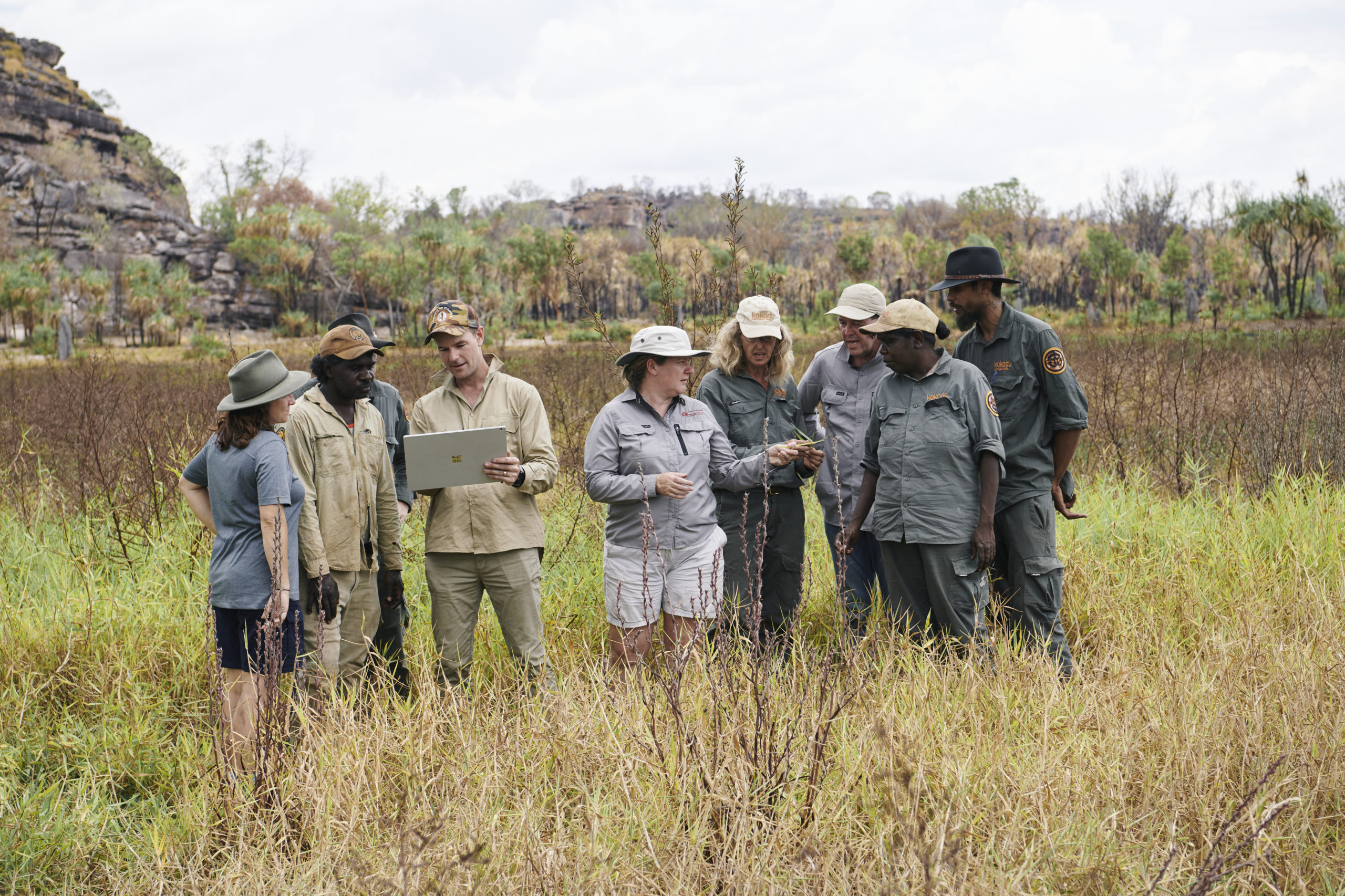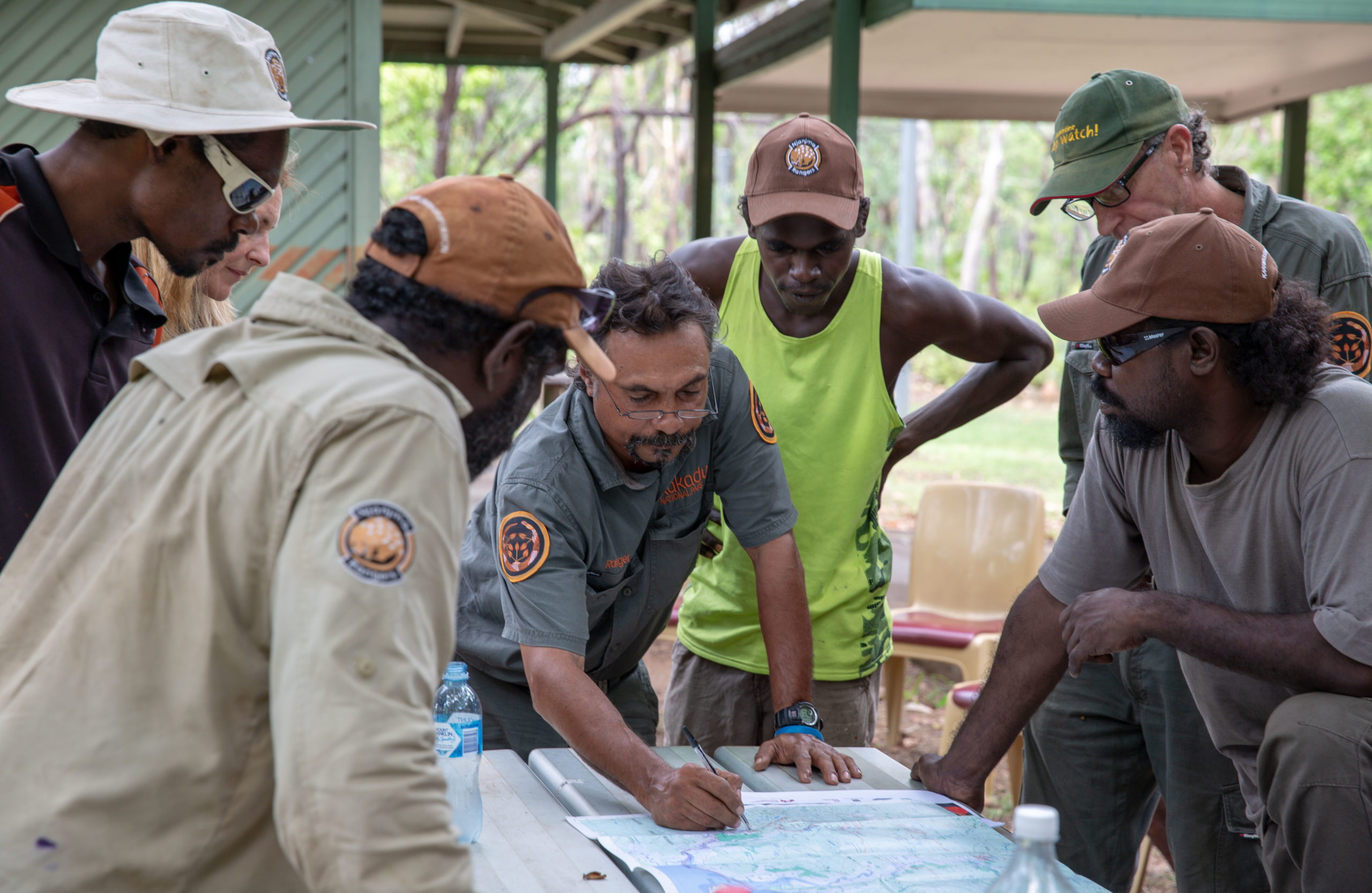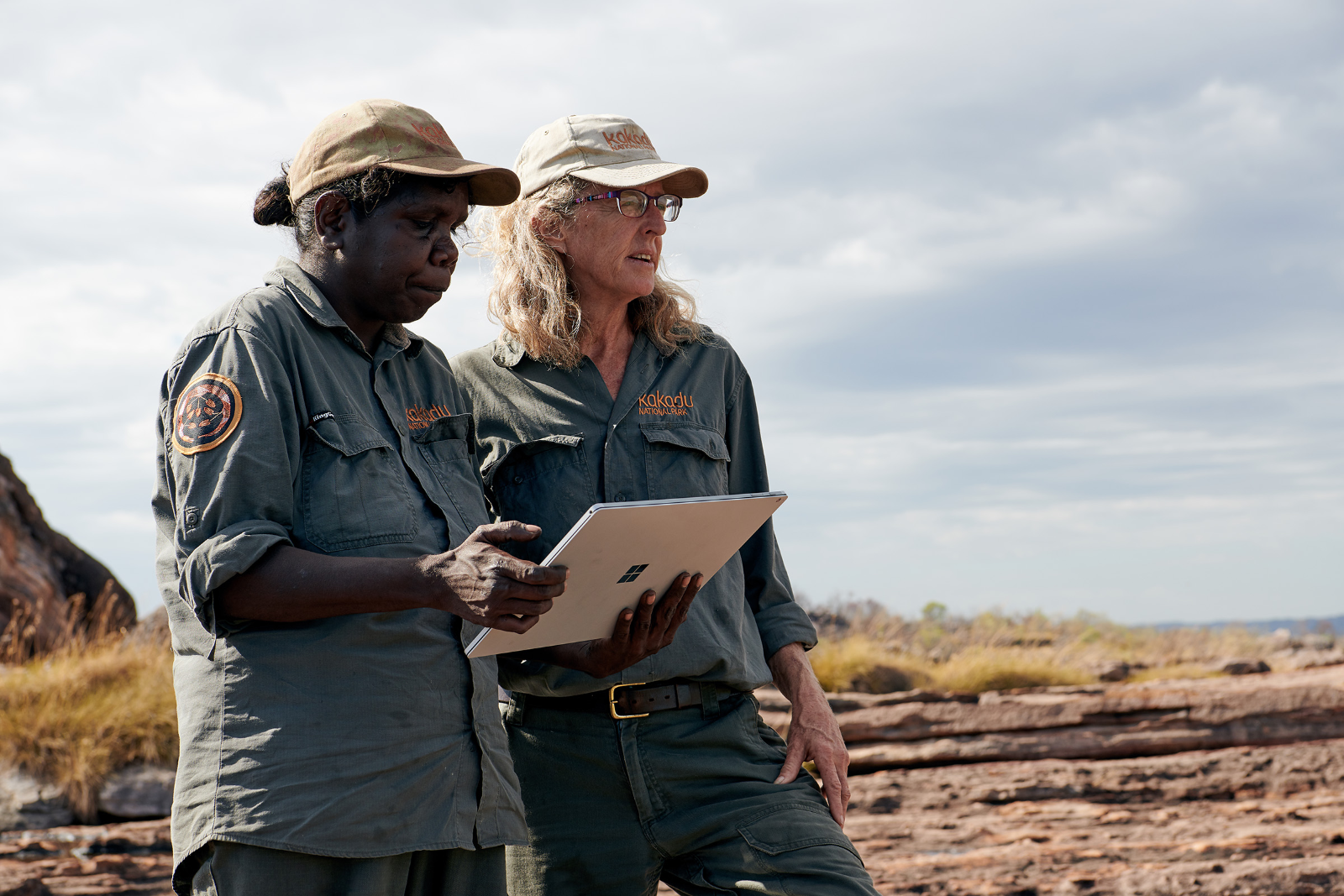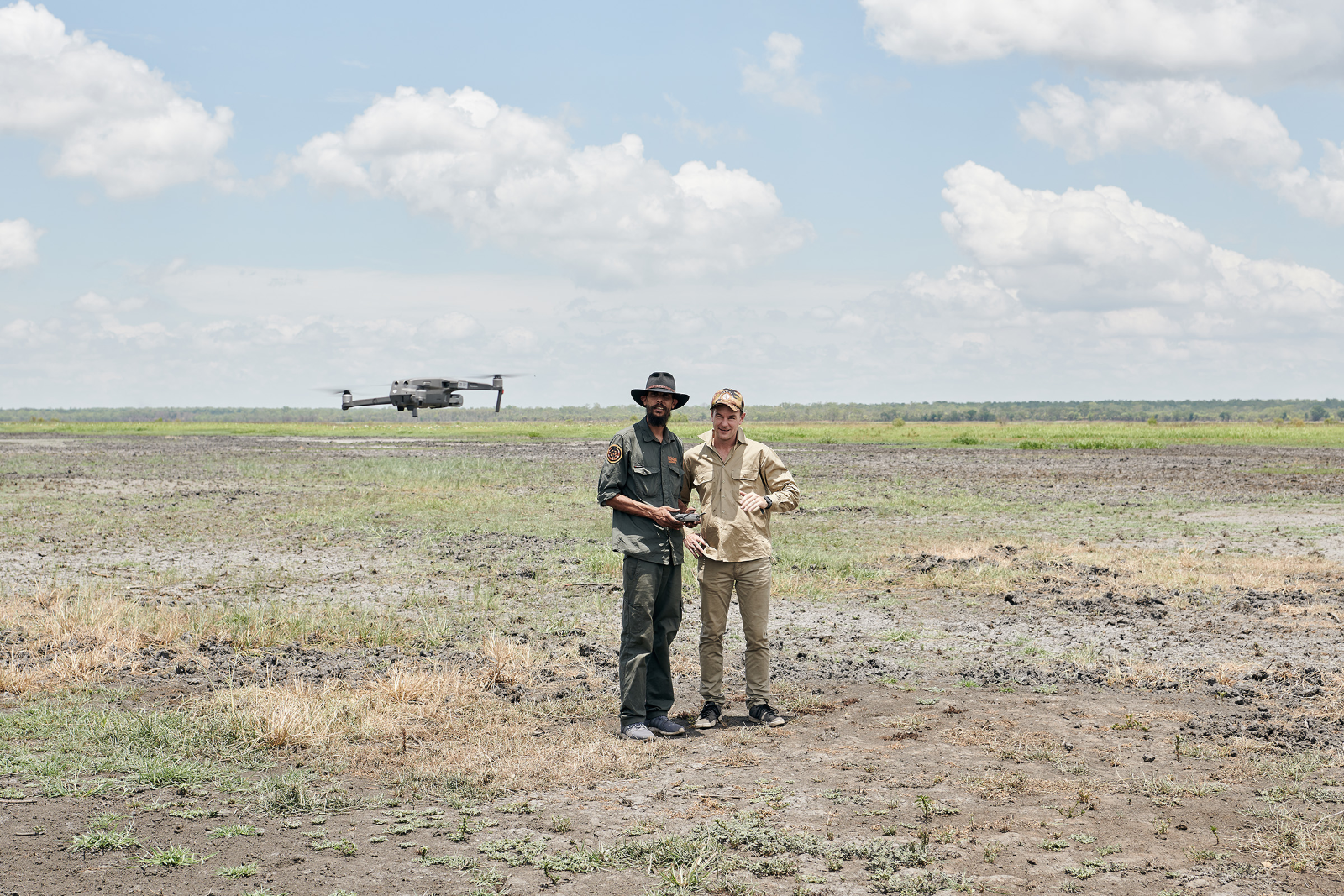The only thing that saddens Traditional Owner and Kakadu ranger Simon Dempsey is seeing the Nardab floodplain becoming choked with invasive para grass (Urochloa mutica).
The thick, waist-high grass threatens many important values on these floodplains. It blocks access to his family’s turtle-hunting grounds. It leaves magpie geese with no place to nest. And it prevents him from taking his family to share knowledge and explain Bininj responsibilities to care for this floodplain.
If nobody can do anything about it in Kakadu, Kakadu won’t be left.
– Mr Simon Dempsey, Bunitj Clan and Kakadu National Park ranger
But research funded by the Australian Government’s National Environmental Science Program has shown that something can be done about para grass.
For 10 years, researchers from CSIRO, Charles Darwin University and The University of Western Australia have been collaborating with Bininj Traditional Owners to map the current extent of para grass, predict where it will spread in the future, and enact targeted control.

The project team and rangers among para grass in Kakadu National Park. Photo by Microsoft.
This research partnership showed that para grass does not spread randomly across the floodplain. Instead, the areas of the floodplain most at risk from para grass invasion coincided with the areas that Bininj identified as the best habitat for turtle and magpie geese.
Without the research to start with we would never have been in a situation to know that in the future we’re going to lose all of our turtle and geese grounds.
– Ms Annie Taylor, Kakadu National Park ranger
The current project, led by CSIRO’s Dr Cathy Robinson and the Bininj/Mungguy Steering Committee, builds on previous work funded by TRaCK and NERP, and uses NESP research to guide effective weed management.

The project worked with Bininj/Mungguy Traditional Owners to develop and apply indicators for the cultural-ecosystem health of the floodplain. Photo by Michael Douglas.
This has enabled the team to combine the evidence developed by science with the knowledge from Bininj collaborators and Kakadu park managers to identify priority areas for targeted control of para grass. Bininj chose to monitor magpie geese, turtles and the health of important sites used for a range of cultural, hunting and family purposes as indicators of the success of the experiment.
Guided by this unique adaptive co-management approach, spraying para grass led to a rapid recovery of the Bininj indicators, with a visible reduction in the area choked by weeds, an increase in open water and the return of important plant, bird and animal species.
In one year we got all the food back. We got all the geese back and we got all the ducks back and we got all the turtles back. Everybody’s really excited that we can do something about this.
– Annie Taylor

Rangers Serena McCartney and Annie Taylor assess para grass management actions. Photo by Microsoft.
Ms Taylor says that Indigenous-led adaptive co-management shows how Traditional Owners, scientists and park managers can work together to not only ‘push back’ against the spread of para grass but successfully eradicate it.
Working with the scientists, getting the feedback on the work we’re doing so we can actually see what’s happening, it just makes such a difference.
– Annie Taylor
It gives us purpose to basically get out there and do it.
– Simon Dempsey
Mr Dempsey says the knowledge gained from the project can be shared with other ranger groups trying to control para grass in other parts of the Northern Territory.

This project has brought together Indigenous knowledge, western science and technology to help look after country. Photo by Microsoft.
Kakadu National Park Manager of Country and Culture Feach Moyle says that the cooperation between the different stakeholders – researchers, Parks staff and Bininj/Mungguy Traditional Owners – was the best part of the project.
It’s a good example of joint management, with Parks rangers and scientists working with Traditional Owners to achieve their aspirations and to achieve aspects of the plan of management for Kakadu National Park.
– Feach Moyle, Manager of Country and Culture, Kakadu National Park
The project has given Simon Dempsey hope that his grandchildren will know the floodplain as he knew it as a child: an amazing place where you can walk out and just pick up the food you need.
Our grandkids will have something in the future for them. Somewhere where they can do their own grocery shopping, like a shop. Our floodplain is basically our front door to our own grocery shop.
– Simon Dempsey
Kakadu Traditional Owner Mr Na-gangila Bangalang agrees.
Kunkare birrikarrmi… njamed nakka paragrass, bolkkime namekke scientist mob birrimwam birridurrkmirri, birrimarnbom kamak rowk nawu ngadberre kunred. And bolkkime, mayh everywhere now.
(“In the past there was … what’s it, para grass. Now those scientists have come and worked to make sure our country is healthy. And now there are animals everywhere.”)
– Mr Na-gangila Bangalang
Research outputs
News releases
Selection of media activity
Blog
Videos
Factsheet
Project webpages
Attributions